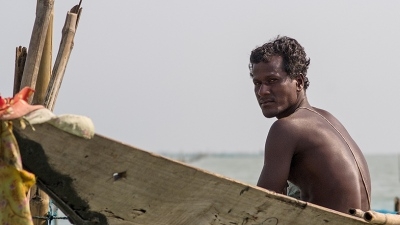Odisha’s Chilka Lake is one of India’s hotspots of biodiversity and one of the largest brackish water lakes in the world. The lake is home to the rare Irrawady dolphin. The Bhitarkanika wetlands contain the second-largest mangrove ecosystem in Asia. Both these areas are also home to large vulnerable populations dependent on coastal resources. A range of port development activities are also under way.
Every year, hundreds of thousands of endangered Olive Ridley sea turtles come to nest on some of Odisha’s beaches. The turtles are, however, at risk from uncontrolled mechanized fishing in prohibited areas, the non-use of turtle excluder devices, and insensitive tourism. In addition, their mass nesting site on the Gahirmatha coast has been gradually shifting northward over the last 20 years due to coastal erosion.
Parts of the mangroves have been reclaimed for cultivation, fuelwood, and timber, as well as for large-scale shrimp farming. And Bhitarkanika’s delicate ecosystem is facing a major threat from the alteration of freshwater inflows due to construction of hydrological structures upstream.
Odisha’s coast is subject to extreme tidal variations. Sea levels have been known to rise by about 4 meters in certain stretches, inundating up to 3 km of coastal land. In addition, frequent cyclones cause heavy losses to agriculture and fisheries, while dislocating life for a large number of poor farmers and fishermen. The coast is also subject to a strong littoral drift, causing an estimated 1.5 million tons of sand to move from the southwest to the northeast in a year.
While the area faces little industrial pollution, the untreated/semi-treated sewage from coastal settlements and effluents from fertilizer plants and industries at Paradip port need to be checked.
Project activities
The Integrated Coastal Zone Management (ICZM) Project is working on two stretches of coastline: Gopalpur-Chilka and Paradip-Dhamra. In these areas, the project is seeking to plant mangroves and other shelterbelt species, protect the Olive Ridley sea turtles and other aquatic life, and pilot shoreline protection in the village of Pentha.
Communities are being trained to plant mangrove nurseries and given incentives to protect them. A gene bank of mangrove species has been established and some 200 hectares have already been planted.
To conserve the turtles, awareness is being raised among local people, and tourists are being sensitized. Community members are being trained and armed to function as boatmen and guards to prevent poaching of these vulnerable creatures, especially during their nesting season. To protect turtle nesting habitats, the project is also seeking to complete the solid waste management system for the coastal town of Paradip.
On the periphery of Chilka Lake and the Gahirmatha Wildlife Sanctuary, the project is seeking to improve the livelihoods of resource-dependent communities, including fisherfolk impacted by the ban on fishing during the Olive Ridley breeding season. Carefully planned, small-scale community-based tourism is being developed. Local communities are being trained to get jobs as boatmen, guides, and dolphin spotters. About 400,000 people from 235 coastal villages are expected to benefit through these measures.
To protect endangered species, motor boat traffic around the Chilka Lake is being regulated. The region’s 3000-plus fishing and tourist boats are being converted into eco-friendly vessels that no longer rely on diesel or other fossil fuels to run them. For the first time in Asia, real-time monitoring and management of lake waters is being undertaken. All fishing around the area is to be certified by the Marine Stewardship Council. Moreover, a wetlands research center is being established to expand knowledge about the area’s fish species, the Irrawady dolphin, and migratory bird habitats.
The ICZM project is further augmenting conservation efforts under the world’s first program to protect the estuarine crocodile. The already successful program has increased crocodile numbers in the area from eight in 1975 to more than 1,600 today.

